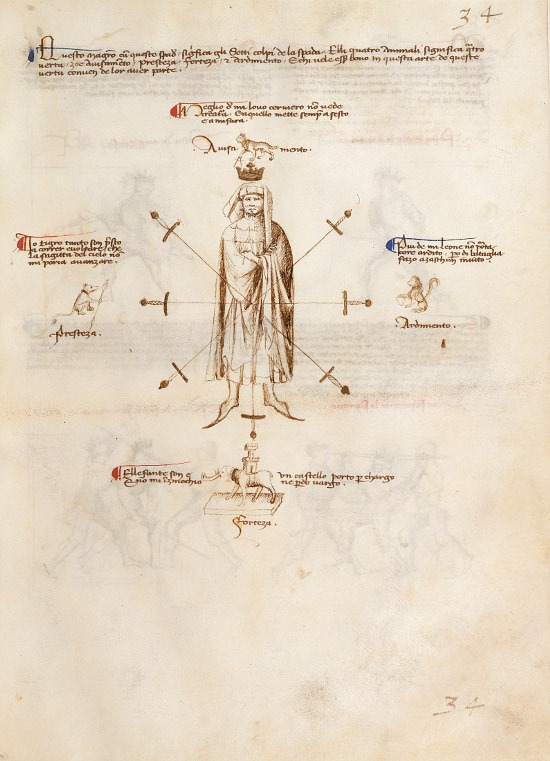Within his 1409 manual Fior di Batagglia, Fiore dei Liberi provides us with an effective guide for reviewing our successful execution of martial technique: surrounding his diagram of blows are a series of 4 animals, each representing an essential quality of successful execution in the art:
The Lynx - Positioned above the figure’s head represents caution. The Lynx is holding a protractor in his forepaw. The judgement of distance and the cautious approach to the opponent are essential to combative success.
Be sure when reviewing the success of a technique to first assess if you did the technique at the right distance and at the right moment.
The Lion - To the right of the figure the lion, a heart under its paw, represents courage or audacity. We must move forward with boldness to find martial success.
Many a technique fails because the one executing it is not confident in its outcome. Therefore their body is not committed in a way that gives the structural or tactical grounding required for it to be successful; a self-fulfilling prophecy
The Elephant - Beneath the feet of the figure is an elephant with a castle on its back. Stability, balance, on groundedness are the essential qualities this beast represents.
Make sure in all of your technical execution that you know how that technique connects with the earth. Make sure both your start and your end position are done from positions of power and balance.
The Tiger - Sitting to the figure’s left is the tiger, an arrow clutched in its paw. Known for its speed, the tiger tells us that we must be able to execute actions efficiently and quickly to make them successful.
Speed is a deceptive trait in martial art. Before trying to force quickness into a technique we must first make sure it is mechanically sound, precise, and efficient. Only then can we add physical speed to the action and expect it to translate into tactical quickness.
